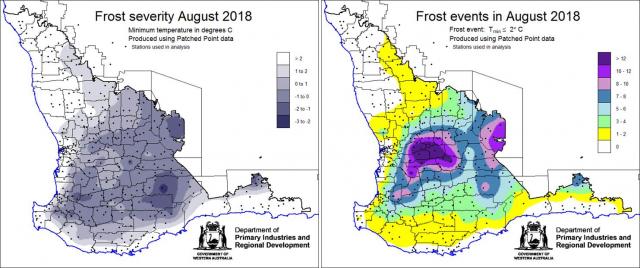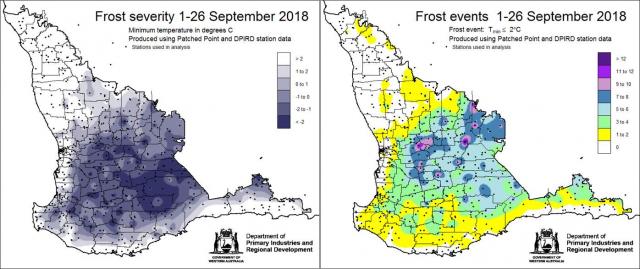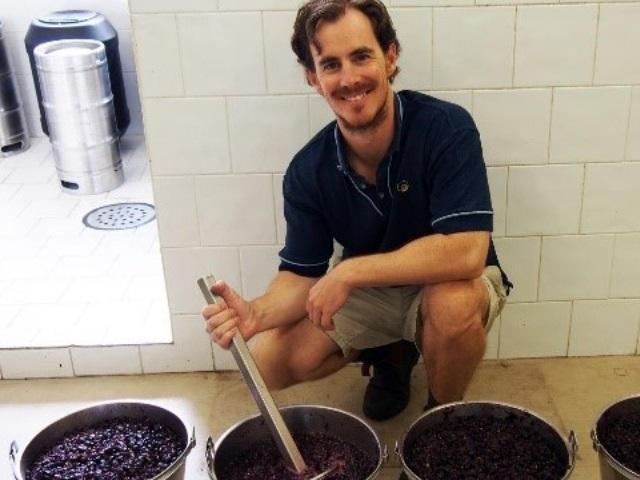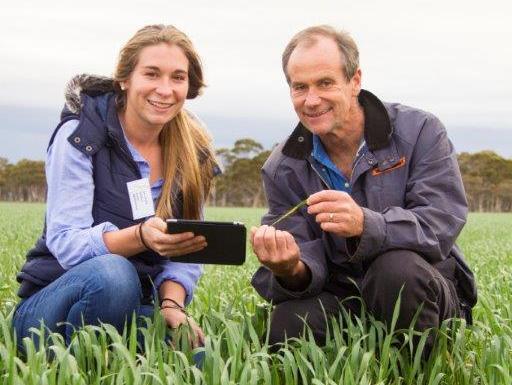Technology investments to boost WA agribusinesses and regional communities

A number of initiatives to help breach the ‘digital divide’ in regional Western Australia are being implemented by the Department of Primary Industries and Regional Development.
Digital telecommunications have become essential for modern businesses throughout the agriculture and food supply chain to operate successfully – from the use of online weather data, to precision farming, to business analysis, marketing and more.
Improved digital connectivity
The department is committed to delivering on the State Government’s commitment to provide access to fast, affordable, reliable broadband services to agribusinesses and residents across our vast State.
While the National Broadband Network rollout is nearing completion, it will not cover the entire length and breadth of Western Australia.
To address this shortcoming, the State Government announced the $17 million Agricultural Telecommunications Infrastructure Fund to pursue alternative solutions and business models that address WA’s unique operating environment.
The department, together with the Office of the Government Chief Information Officer, undertook a State Telecommunications Infrastructure Audit, to guide investments from the fund.
Department officers also compiled the nation’s first Digital Infrastructure Atlas, which maps the locations of key telecommunications infrastructure in WA, such as telephone exchanges, optic fibre trunklines and radio communication sites.
The Atlas will assist the commercial sector to identify and evaluate opportunities for investments that could improve digital connectivity for regional businesses and communities.
The $5 million Digital Farm Grants program was announced in January, to provide matching funding for commercial service providers to fill in the gaps in the current and planned NBN fixed wireless and fixed line footprint.
The first round of grants were announced in August, to provide high speed broadband to more than 1000 farming enterprises, across the North Midlands and Great Southern, as well as in the districts of Chapman Valley, Mount Barker, Wickepin and Goodlands.
The second round of successful applicants is expected to be announced soon.
The Grainbelt Digital Enhancement project was announced in September to address the significant variability in broadband bandwidth, download limits and speeds in the grainbelt.
The project aims to harness expertise in the commercial sector to work with the State Government and explore technical and commercial solutions to deliver a ubiquitous broadband service in the region.
Adoption of agricultural technology (agtech)
Research has identified the next leap in agricultural productivity improvements is being generated by the adoption of new digital technologies.
The department also has a number of initiatives to capture the benefits of the digital revolution in the agriculture and food sector.
The department is implementing the State Government’s WA Internet of Things (IoT) DecisionAgGrant program to stimulate the development and use of digital agricultural technology by WA farm businesses.
The ‘internet of things’ is a commonly used term that refers to the use of internet-based technology in everyday use, from smart phones and fitbits, home connectivity sensors, agriculture and logistics.
Matching funds have been made available to successful applicants to trial on-farm telecommunications network solutions, decision tools and analytic data platforms to assist growers to make more informed, data-driven decisions.
Successful participants will get to share their findings with each other and the broader community via an onfarm ag-tech demonstration network, to nurture and promote beneficial innovations.
The department is also supporting AgriStart’s HARVEST Agtech Accelerator program , an initiative that is assisting eight WA agtech companies via a 12 week program to scale their business, attract investment, develop new networks and partnerships or explore new export markets.
It also hosted the successful AgTech Hackathon event, in association with the Ministry of Data, where 11 teams of computer experts came together to develop digital solutions to a range of agricultural challenges.
Funding has also been made available to fledgling start-ups and people with an agtech business idea to develop their plans at the Combine Agtech Hub.
Successful applicants receive free access to state-of-the-art office space at the Flux innovation hub, access to mentoring and networking events and the opportunity to work alongside like-minded people.
The department also has several other activities in its eConnected Grainbelt and Sheep Industry Business Innovation projects that are examining the application of agtech in farm businesses.
It is imperative the department continues to work closely with stakeholders and service providers to ensure WA’s agricultural and food sector is best equipped to operate in an increasingly sophisticated, rapidly changing global operating environment and remain internationally competitive.
Hay or Harvest? Informed salvage options can minimise the impact of frost.
Frost has a significant economic and emotional impact on the whole community and is difficult to manage
A good understanding of the extent of damage after a frost event will help inform salvage options and minimise the impact on the following season.
August and September saw a series of frost events ranging from mild to moderate throughout the central, eastern and southern Wheatbelt (see Figures 1 and 2). Damage in cereals, canola and pulses is now being reported as a result of the most recent frost events that occurred on 15-16 September. Frost susceptible parts of the landscape, gullies, valley floors, light soils and early sown crops are where the majority of losses have been seen so far.
Once a comprehensive assessment has been done, and damage has reached significant levels some growers have taken the opportunity to cut for hay. Options such as the production of hay/silage, grazing, swathing into windrows or hay freezing can be considered, but will depend on the severity, area affected and other compatible farm enterprises (for example, livestock).
Growers should be confident about damage levels and consider all economic aspects before making decisions about damaged crops. Refer to the new Frost Identification Guide for Cereals to help quantify damage.
Most growers will opt to leave the crop and harvest as per usual, perhaps leaving it to harvest last if logistics allow it. Some considerations around this include:
- Frosted crops are difficult to thresh due to higher residual sugars, lower grain volume and green material in the case of a plant re-tillering. Despite lower tonnages, daily harvest maintenance and regular clean down will remain vital to minimise machinery fatigue and fire risk in these difficult harvesting conditions.
- Grain quality may also be compromised depending on the frost timing. Frost affected grains usually have a lower hectolitre weight and higher screenings. Adjusting header settings and/or grading can be beneficial but check the feasibility first.
If cutting for hay, timing is everything. Previous DPIRD case studies have shown little difference in crude protein and dry matter digestibility in frosted verses non frosted cereals, with time of cutting having a greater influence on hay quality.
In cereals, straw quality declines after early grain-fill / milk dough period. Later stage of maturity usually results in higher fibre, lower protein and energy content. If the frost was severe leaf damage may be evident. In this case cutting as soon as possible helps preserve the colour thus minimising quality deterioration.
Consider the demand and opportunity for marketing hay, the potential for on-farm storage and use of hay from the frosted crop and the likely costs and returns from haymaking. Hay quality can vary greatly, quality testing is suggested before feeding to livestock. Depending on soil moisture the plant may re-tiller and grain can be harvested.
Other considerations include:
| Advantages | Disadvantages |
| Stubble removed | Cost per hectare |
| Weed control | Quality may be poor depending on frost timing and opportunity to cut |
| Recover costs |
|
The table below outlines the advantages and disadvantages of other cost recovery options.
| Options | Advantages | Disadvantages | Considerations |
| Chain / rake | Retains some stubble and reduces erosion risk
Allows better stubble handling at seeding | Cost per hectare
Time taken | Consider weed burden, wind and water erosion. |
| Graze | Good feed value depending on frost timing
Weed control | Inadequate stock to utilise feed - stock feed unevenly
Remaining grain may cause acidosis
Stubble may be difficult to sow into | The feed value will vary depending on crop type. Frosted pulse crops will have minimal grain present, so can't be considered ideal for finishing livestock. |
| Hay freezing / spray | Stops weed seed set
Preserves feed quality for grazing
Gives time for decisions
Retains feed
Retains organic matter | Difficulty getting chemicals onto all of the weeds with a thick crop
May not be as effective as burning
Boom height limitation
Cost per hectare
Some grain still in crop | Hay freezing the damaged crop before grazing will maximise the fodder quality and rotation benefit.
|
| Plough | Recycles nutrients and retains organic matter
Stops weed seed set
Green manure effect | Requires offset discs to cut straw
Soil moisture needed for breakdown and incorporation of stubble | It will depend on the rotation option planned for next year. A pasture option has different requirements to a crop option where stubble must be prepared. |
| Swath | Stops weed seed set
Windrow can be baled
Regrowth can be grazed
Weed regrowth can be sprayed
Can preserve some of the nutritive value of the crop without the expense of applying desiccant herbicides | Relocation of nutrients to windrow
Low market value for straw
Poor weed control under swath
Cost per hectare | More suited to lighter textured soils where erosion may pose a problem for green manuring.
|
| Burn | Recycles some nutrients
Controls surface weed seeds | Potential soil and nutrient losses
Fire hazard | Consider wind and water erosion risk.
Particularly if grazing will occur before burning. |
For information on frost identification in crops, assessment and management options refer the article ‘Frost resources available to assist growers’ or visit one of the pages below:
- Frost Identification Guide for Cereals
- Management options for a frost crop
- Frost: Frequently Asked Questions brochure
- Frost monitoring tips
- Minimum temperatures from DAFWA weather stations can be viewed and exported from the Extreme weather events page and Weather Station app.
Growers and consultants are encouraged to make reports of any frost events in their local areas using the PestFax Reporter app. These reports will appear on the PestFax map.
For more information contact Kelly Ryan, development officer, 9368 3480 or Ben Biddulph, research officer, on 9368 3431.
Alternative wine varieties receive gold
A number of wines made as part of an evaluation project led by the Department of Primary Industries and Regional Development received medals at the 2018 Geographe Wine Show.
The selection of red and white wines, bottled at the department’s Bunbury laboratory and made from 22 alternate varieties of grapes grown on a trial block at the Harvey College of Agriculture, received four gold medals, four silver medals and nine bronze.
The wines were made as part of the department’s project ‘Evaluating and demonstrating alternative varieties’, funded by the Wine Australia Regional Program.
Department research officer Richard Fennessy said the Geographe Wine Show offered an opportunity to exhibit and have wines grown in the region benchmarked against industry standards.
By participating in the show the department received valuable independent expert assessment on the qualities of the trial wines and excellent feedback.
Trial varieties awarded were Arneis (Italy, white), Harslevelu (Hungary, white), Largrein (Italy, red) and Scheurebe (Germany, white) - gold medals; Graciano (Spain, red), Montepulciano (Italy, red), Saperavi (Georgia, red) and Vermentino (Sardinia, white) - silver medals; and Carmenere (France, red), Dolcetto (Italy, red), Fer (France, red), Fiano (Italy, white), Pignoletto (Italy, white), Sciacarello (Corsica, red), Late picked Scheurebe (Germany, white) and Tannat (France, red) - bronze medals.
Richard said in 2017 the department entered 15 wines in a separate class in the show, with judges aware that the wines were made from a trial. Encouraging results were received with three silvers and 11 bronze medals awarded. On the strength of these results, the department was encouraged to enter the wines in commercial classes in the 2018 awards.
The department acknowledges the Geographe Wine Show for their ongoing support.
Information on the performance of these varieties and the qualities of the wines will be available to WA wine producers through a series of forums and workshops being planned for the later part of the year.
For more information contact Richard Fennessy research officer, on 9780 6219.
Grants available to support investment and expansion
A new round of grant funding is available for agribusinesses considering investing in expansion of value adding production facilities or establishment of new facilities in Western Australia.
The Department of Primary Industries and Regional Development’s (DPIRD) $1.5m Value Add Agribusiness Investment Attraction Fund aims to support the important and growing value added processing sector in WA to expand and increase production, sales and distribution of quality value added products that can create jobs and drive growth and other benefits in regional areas.
- Stream 1 – Capital Investment: Grants of up to $300 000 are available towards capital investment by businesses to invest in expansion or new value adding production equipment and facilities that can create jobs and deliver benefits in regional areas.
- Stream 2 – Feasibility Studies: Grants of up to $100 000 are available to support agrifood businesses to undertake feasibility studies, obtain regulatory approvals and other services necessary to make an investment decision to expand or establish production facilities in WA.
These grants may provide an incentive for interstate and international companies to invest in establishing value adding agribusiness operations in our State.
They can also be available to clusters of businesses that may be establishing a value added processing facility to meet the needs of the group of businesses.
Applications close on Friday 19 October 2018. Guidelines are available on the DPIRD website or for more information contact Peter May on 6552 2057.
Investments boosting WA grains R&D capacity
The department is about to commence its extensive harvest program of grains trials, spread from Northampton to Esperance.
More than 400 field and glasshouse trials on wheat, barley, canola, oats, quinoa and pulses have been sown across the department’s network of eight regional research facilities and on landholders’ properties associated with grower groups, academic and industry collaborators.
The trials provide crucial on-ground evidence to support the department’s comprehensive program of crop agronomy, genetic improvement, soil management, crop protection and farming systems research and development (R&D) for more than 40 individual projects.
The department has long been an essential provider of in-the-paddock R&D, which continues to evolve and respond to the ever-changing demands of the global grains market.
DPIRD grains R&D Infrastructure
The State government has buoyed investment in its grains R&D capability and capacity to assist the WA grains industry to remain internationally competitive.
Key investments made this year include:
- Northam Grains Research Facilities - $11.5 million state-of-the-art laboratories, new storage, preparation and processing rooms, glasshouses and screen houses and field plots.
- Mobile Grains Research Laboratories – two purpose built and fitted out vans to boost research integrity and efficiencies worth a total of $175,000
- Five new mobile irrigators - worth $240,000 to simulate environmental conditions for a range of research scenarios
- More than $500,000 investment in research machinery and infrastructure
- Upgrade of Merredin grains research laboratories – following weather event in March and will include new research equipment and contemporary workspaces.
Collaborative research
The department prides itself on its reputation for effective collaborative research and works closely with industry and other research organisations to ensure R&D targets stakeholders’ needs, augments innovation gains and eliminates duplication.
We continue to undertake a broad ranging program with long time partners, the Grains Research and Development Corporation (GRDC).
Some major 2018 commitments and achievements include:
- Soils and crop nutrition project - a multifaceted project co-funded by GRDC to optimise fertiliser use of crops grown in ameliorated soils. The department works with Curtin University, Murdoch University, the University of WA, the CSIRO and MapIQ to fill in the knowledge gap and update decision support systems for fertiliser use
- ‘Canola agronomy research in WA’ Bulletin – an overview of 19 research activities underway by the department and CSIRO, with the support of GRDC
- BlacklegCM app – developed and delivered by the department and GRDC with several contributors to improve the management of this significant canola disease. A similar app is expected to be available next year to help manage the canola fungal disease sclerotinia stem rot.
- Improved acid tolerant barley lines and molecular markers – delivered to Australian breeding programs via DPIRD and Murdoch University’s Western Barley Genetics Alliance (WBGA), which will underpin the development of new high-yielding varieties for Australian barley producers.
The department is also engaged in a number of national R&D programs, including the Australian National Frost Initiative, the National Oat Breeding Program and the National Crop Protection Program, as well as university partnerships through Murdoch University with the WBGA and the University of WA with SoilsWest.
Department synergies
The new Department of Primary Industries and Regional Development (DPIRD) remains committed to developing products, services and practices to make the WA grains industry more efficient, effective and sustainable.
More than 140 highly qualified and experienced staff at 10 department offices across the grainbelt are involved in grains R&D, including farming systems specialists, agronomists and soil scientists, crop pathologists, entomologists and weed scientists, crop geneticists and skilled technicians.
New skills in computer science have also been added to the department’s capabilities, in response to the growing reliance on digital technology to deliver the next leap in productivity improvements.
This has resulted in upgrades to the department’s climate service, tools and models, and use of applied data from its network of more than 175 weather stations, alongside research on remote pest and disease surveillance and digital decision making apps.
The department is investing in the next generation of grains scientists through its Regional Research Agronomy project in partnership with GRDC and, more recently, by funding five grains research scholarships to add to the department’s research insights and capabilities.
DPIRD management continues to reassess the needs of its stakeholders and the marketplace to ensure the department is well placed to drive WA grains R&D into the future.
The department has the expertise, resources and capacity to deliver targeted, timely and relevant information and new sources of knowledge to WA grain growers and agribusinesses.
To find out more about the department’s current grains R&D activities click here.
Get ready for Biosecurity Blitz 2018
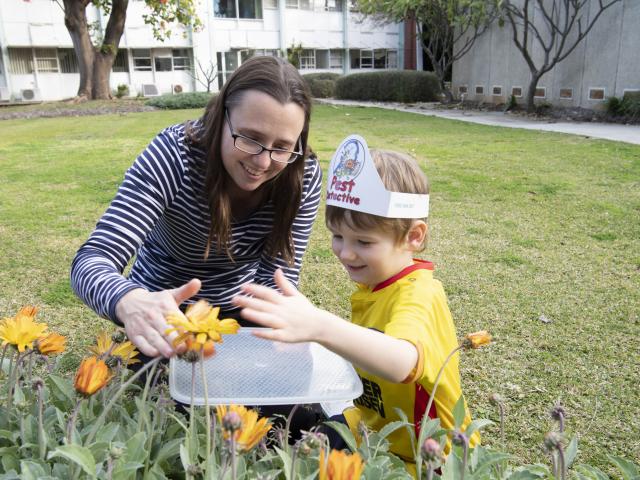
Communities across the State are encouraged to get ready to participate in the upcoming Biosecurity Blitz 2018 campaign.
This is the fourth year the Department of Primary Industries and Regional Development (DPIRD) has run the annual event, which this year will be held from 19 October to 16 November.
The event encourages the public to get outdoors and look for insects, weeds and signs of disease, which could impact Western Australia’s valuable agriculture and fisheries industries.
Landholders, families, students and community groups across Australia are invited to download one of the department’s free monitoring apps or go to the MyPestGuide™ Community website to report observations.
The department has led responses to several biosecurity incursions over the past 18 months, including citrus canker, Queensland fruit fly and brown marmorated stink bug, highlighting the importance of early detection and monitoring surveillance.
With the majority of exotic pest detections coming through public reporting, everyone who participates is assisting the department to implement an efficient biosecurity response. The public plays an important role in assisting the first line of biosecurity defence, observing and reporting suspect pests, diseases and weeds.
Early detection of new exotic pests is crucial to attempting eradication and minimises the impact on the community, the agriculture, horticulture and fisheries industries we depend on, and the State’s economy.
To protect our food production and uphold WA’s enviable biosecurity status, it is important for good collaboration between government, the community and industry.
The community’s involvement in Biosecurity Blitz has grown year-on-year, with more than one thousand reports filed during the 2017 campaign. Even reports of common pests provide crucial pest surveillance data as they help provide evidence that WA is free from certain exotic pests.
Biosecurity Blitz 2018 participants can download the free MyPestGuideTM Reporter or PestFax apps, as well as the WA PestWatch app for aquatic observations. Online reports can also be made via the department’s MyPestGuideTM Community webpage.
To participate simply take a photograph of any insect, weed or disease and upload it via the apps or submit images via the website.
Department staff will identify the organisms reported and collate the data online for the reporting community to view so the public can learn about what other reporters are finding.
For more information and to sign up for email updates containing the best reports of the blitz visit the Biosecurity Blitz 2018 website.
Funding available under new Internet of Things grant
Grower groups and agricultural schools or colleges are encouraged to apply for funding under a new scheme, initiated by the Department of Primary Industries and Regional Development’s (DPIRD) eConnected Grainbelt Project.
Applications are now open for the new WA Internet of Things (IoT) DecisionAg Grant Program which will contribute up to $500 000 to establish digital agricultural technology on reference farms throughout WA’s Wheatbelt.
State funding under the program will be used to match funds up to a maximum of $45 000 per grower group, or agricultural school or college. This will allow successful applicants to trial on-farm telecommunications network solutions, decision tools and analytic data platforms, essentially assisting growers to make more informed, data-driven decisions.
This new program will address identified issues that remain with regards to ‘on-farm connectivity’.
Capital costs for successful recipients may include infrastructure, on-farm equipment, telemetry systems, hardware, software, digital agricultural technologies and related one-off expenses. This can include connected devices utilising on-farm radio networks, ubiquitous WiFi and long-range, low power, wide area networks.
Anyone wishing to find out more is encouraged to get in touch with their local grower group, with details available on the department’s website.
Further information is available on the department’s website along with the Guidelines and FAQ sheets. To apply visit the Smartygrants webpage.
Please note that the application period has been extended by two weeks and applications are now due by 4pm on Friday 19 October, 2018.
What global food industry trends mean to WA premium food and beverage business
Are you interested in how global industry trends can shape your business and change consumer and retailer demands?
The Food Industry Innovation project is bringing back Professor David Hughes, a pre-eminent global food industry expert, to provide insights which will help you identify market opportunities and grow your premium value-added food and beverage business.
Otherwise known as 'Dr Food' by his blog followers, Professor Hughes is Emeritus Professor of Food Marketing at Imperial College London and an advisor on international food organisation boards. He travels the world consulting to businesses, trade associations and governments.
A key focus of the Food Industry Innovation project is to help WA producers understand global food trends and find new market opportunities.
Information and registration is available for two events to be held in Busselton and Wanneroo.
For more information email the Food Industry Innovation team or phone 9899 9283.
Events, grants and scholarships
DPIRD Supported Events
Explore the benefits of soil testing
Join the Regional Estuaries Initiative at sites throughout the South West and South Coast to see the benefits of using soil testing to make better fertiliser decisions. All field walks are free and are an excellent opportunity to discuss fertiliser management with fellow farmers and Department of Primary Industries and Regional Development (DPIRD) officers.
- Peel-Harvey catchment – 16 October 2018
- Wilson Inlet catchment – 23 October 2018
- Lower Blackwood catchment – 25 October 2018
- Geographe catchment – 31 October 2018
- Oyster Harbour catchment– 7 November 2018
For more detail and to RSVP, visit the Explore the benefits or soil testing webpage.
Global Food Industry Trends - What do they mean for your business, 16 October 2018, Busselton
Professor David Hughes will provide enlightening presentations to WA premium food and beverage value-adding businesses in the South West. The seminars will provide an overview of global food and beverage industry trends and offer strategies to help shape businesses to adapt to changing consumer and retail demands.
Pest and disease management workshop (vineyards), 16 October 2018, Swan Valley
International, national and local experts will present the latest research and sustainable practices for managing vineyard pests and diseases. Key presenters Professor Wayne Wilcox and Dr Bob Emmett.
Pest and disease management workshop (vineyards), 17 October 2018, Margaret River
International, national and local experts will present the latest research and sustainable practices for managing vineyard pests and diseases. Key presenters Professor Wayne Wilcox and Dr Bob Emmett.
Global Food Industry Trends - What do they mean for your business, 18 October 2018, Wanneroo
Professor David Hughes will provide enlightening presentations to WA premium food and beverage value-adding businesses in the Wheatbelt and peri-urban areas north of Perth.. The seminars will provide an overview of global food and beverage industry trends and offer strategies to help shape businesses to adapt to changing consumer and retail demands.
Pest and disease management workshop (vineyards), 19 October 2018, Mount Barker
International, national and local experts will present the latest research and sustainable practices for managing vineyard pests and diseases. Key presenters Professor Wayne Wilcox and Dr Bob Emmett.
Biosecurity Blitz 2018, 19 October - 16 November 2018, Statewide
Biosecurity Blitz 2018 will give everyone an opportunity to discover and report to us as many interesting or damaging pests (animals, insects, diseases and weeds) as possible across Western Australia over one month.
Grants - new this edition
Value Add Agribusiness Investment Attraction Fund, close 19 October 2018
Aims to create jobs and drive productivity and capability of this growing industry sector. It is open to WA, interstate and international agribusinesses looking to invest, expand or relocate value adding processing or food and beverage production facilities in Western Australia.
WA Internet of things DecisionAg grant program, close 19 October 2018
Aims to establish digital agricultural technology on reference farms throughout WA’s Wheatbelt. Successful applicants will trial on-farm telecommunications network solutions, decision tools and analytic data platforms essentially assisting growers to make more informed, data-driven decisions.
2019 Agrifuture Rural Womens's Award, close 31 October 2018
The AgriFutures™ Rural Women’s Award is Australia’s leading award acknowledging and supporting the essential role women play in rural industries, businesses and communities. The Award provides a platform to inspire and support Australian women to use and develop their skills to benefit their industries and communities.
Regional Economic Grants, close 2nd November 2018
In recognition of the high level of community support for small grant programs in the regions, the RED Grants program is being implemented to boost investment in local regional projects that contribute to economic growth initiatives, local marketing and innovation pilots, and importantly are driven by the regional communities.
Grainbelt Digital Enhancement Project, EOI's due 2 November 2018
The aim of the Grainbelt Digital Enhancement Program is to deliver high capacity broadband and improved access to digital technology to far-reaching, broad coverage areas throughout WA's Grainbelt. The EOI process will identify suitable capable organisations to work with the State Government to deliver consistent, high capacity broadband services to all recipients throughout the Grainbelt.
Grants - ongoing
Regional New Industries Fund, applications opened 3 October and there is currently no set closing date.
The State Government is committed to building regional economies that are entrepreneurial, creative and technology-driven to create sustainable job opportunities for regional people. Any regionally-based organisation or individual interested in innovation and business development is encouraged to register to their interest with their local Regional Development Commission
Scholarships
WA sheep industry scholarships, closes 31 October 2018
The WA sheep industry scholarship program is designed to support and encourage individuals who wish to pursue further study by addressing key industry questions relevant to the sheep industry supply chain in WA.
Combine agtech scholarships, undefined closing date.
Combine scholarships are open to agtech start-ups, from idea to late stage.
Supported by DPIRD and CBH, the scholarship offers start-ups businesses three months, free co-working space at a dedicated space in the Perth CBD.
As part of the scholarship, entrepreneurs will also have access to a mentoring network to develop viable business products.

